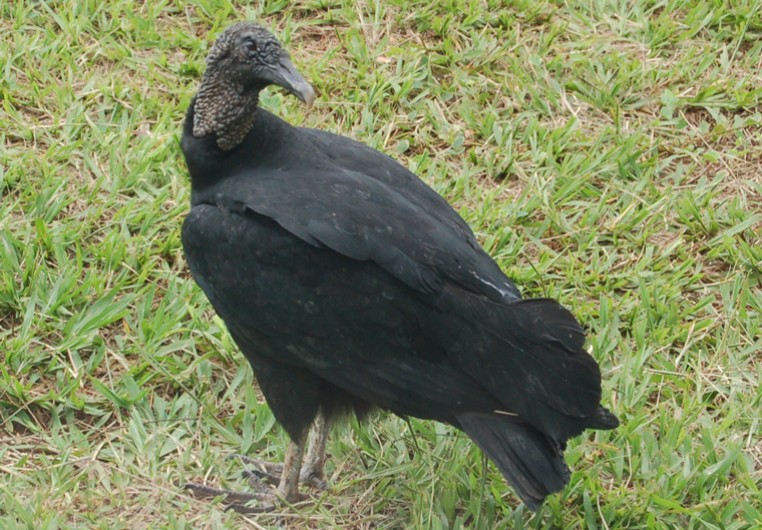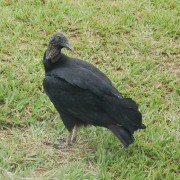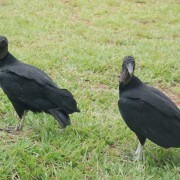Biodiversity
 Black Vulture
Coragyps atratus | Bechstein, 1793
Black Vulture
Coragyps atratus | Bechstein, 1793

Characterization: Large species measuring about 62 cm in length. It has a bare, dark-gray head and neck, and its body plumage is black, except for the feathers on the tips of the wings, which are white. Hatchlings have white plumages.
Distribution: From North America to Argentina, Chile, and Brazil.
Habitat: Mainly anthropogenic environments, avoiding dense forests.
Habits: A diurnal species, this bird is active early in the morning and still at dusk. It flies heavily, alternating a few quick wing beats with gliding, which it masters.
Breeding: This bird lays 2 eggs in a nest consisting of crushed branches that can be found on limestone cliff outcrops and on the ground, in the middle of ferns.
In the UFRA area: It is one of the most frequently seen species at the São Francisco Sugarmill. It was spotted 130 times. It has a broad spatial distribution, being spotted in the organic sugarcane fields, exotic woods, wetlands with herbaceous plants, wetlands with riparian forests, in restored native forests, in mixed forests in regeneration, native forests, in drainage ditches, in forests in spontaneous regeneration, and in fields in spontaneous regeneration.





